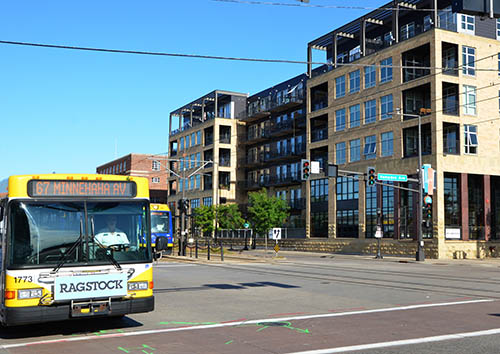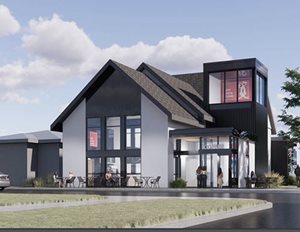 The Met Council has awarded $5.5 million in Livable Communities grants to support mixed-use development near high-frequency transit routes. A total of five projects in three cities were funded, creating a total of 223 units of affordable housing and 431permanent jobs (new and preserved).
The Met Council has awarded $5.5 million in Livable Communities grants to support mixed-use development near high-frequency transit routes. A total of five projects in three cities were funded, creating a total of 223 units of affordable housing and 431permanent jobs (new and preserved).
The grants support dense and diverse developments that emphasize pedestrian activity, support multi-modal transportation options, and increase transit ridership. The developments are typically mixed use, supporting economic activity and including homes affordable to households earning up to 60% of area median income. Some are community destinations and cultural hubs.
“I appreciate the innovative ways we are supporting development with more public green space and supporting workforce training opportunities for youth,” said Council Member Chai Lee, a member of the Met Council’s Community Development Committee. “Not only are we addressing housing insecurity and transportation needs through these grants, but we’re doing it in a thoughtful manner that supports people and allows them to improve their lives.”
Projects include large-unit affordable housing, workforce development opportunities
The five projects awarded funding in this round include:
Opportunity Site, Brooklyn Center: $2 million to construct an area-wide stormwater system and multi-modal parkway that will support future development at the site. This phase also includes construction of 498 new housing units and creation of 76 new jobs; 23 are at a living wage.
The LOMA, Minneapolis: $1 million to support construction of 62 units of affordable senior housing, including 16 units with three bedrooms for intergenerational living. Ground-level commercial space will include a Liberian restaurant that was displaced in 2020 and workforce training.
Rise Up Center, Minneapolis: $500,000 to support construction of an economic justice hub that will focus on BIPOC workforce development in the green building and clean energy development fields. The center will have the capacity to train 3,000 residents annually and will include apprenticeships that prepare participants for future jobs after completing the program.
 Indigenous Wealth Building Center, Minneapolis: $500,000 to support expansion of what was formerly known as the Mni Sota Fund headquarters. The project, located in the American Indian Cultural Corridor in Minneapolis, will include a multi-use coffee shop, art gallery, offices, and co-working and events spaces. The building is designed to be LEED certifiable upon completion and will incorporate energy-efficient appliances and fixtures.
Indigenous Wealth Building Center, Minneapolis: $500,000 to support expansion of what was formerly known as the Mni Sota Fund headquarters. The project, located in the American Indian Cultural Corridor in Minneapolis, will include a multi-use coffee shop, art gallery, offices, and co-working and events spaces. The building is designed to be LEED certifiable upon completion and will incorporate energy-efficient appliances and fixtures.
Hamm’s Brewery East End, St. Paul: $1.5 million to support construction of 120 units of affordable housing in a large multi-phase development. 31 of the units are deeply affordable (for households earning 30% of area median income or less), and 10 have four bedrooms or more to serve larger families in the area. The project team is working with local artists to design public art for the site that reflects the culture of the local neighborhood.
To be eligible and compete for Livable Communities funding, metro area local governments must participate in the Livable Communities program. In 2024, 76 cities and 1 township are participating in the program.
High-frequency transit attracts development
The most recent annual report by Metro Transit’s Office of Transit Oriented Development showed that $16.4 billion in development was permitted along high-frequency transit routes between 2009 and 2022, including:
- 43% of the region’s multifamily development by permit value, comprising 55,200 units
- 42% of the region’s commercial development
- 31% of the region’s public and institutional development
In addition, the report found that while parcels near high-frequency transit account for just 2% of taxable parcels in the seven-county region, they generate more than 25% of the region’s property tax revenue. Tax revenue from properties within ¼ mile of transit increased much faster than properties further from transit. This increase is heavily driven by new infill development.
View the full report here.